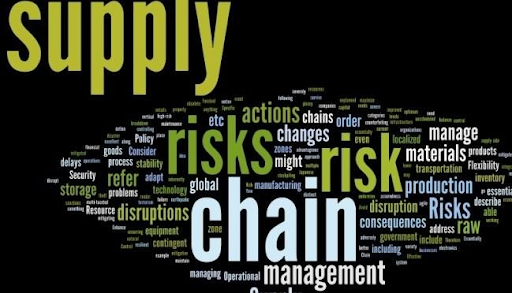In today’s interconnected global economy, businesses face a myriad of risks that can disrupt their supply chains. From natural disasters and geopolitical tensions to pandemics and cyber threats, the potential for disruption is ever-present. To ensure operational resilience, organisations must implement robust supply chain risk assessment strategies. This article explores the importance of these assessments and how they contribute to a company’s ability to withstand and recover from adverse events.
Understanding Supply Chain Risk
Supply chain risk refers to the potential disruptions that can affect the flow of goods and services within a supply chain. These risks can arise from various sources, including:
- Natural Disasters: Hurricanes, earthquakes, and floods can damage infrastructure and halt production.
- Economic Factors: Market volatility, inflation, and changes in consumer demand can impact supply availability.
- Geopolitical Issues: Trade wars, tariffs, and political instability can disrupt international supply chains.
- Technological Challenges: Cyberattacks and system failures can lead to data breaches and operational downtime.
- Supplier Reliability: Dependence on a single supplier or a limited number of suppliers can increase vulnerability to disruptions.
Identifying and assessing these risks is essential for organisations to develop effective mitigation strategies.
The Importance of Supply Chain Risk Assessment
1. Enhancing Visibility and Understanding
Conducting a thorough supply chain risk assessment provides organisations with enhanced visibility into their supply chain operations. By mapping out the entire supply chain—from raw material sourcing to distribution—companies can identify potential vulnerabilities and dependencies. This understanding allows for better planning and informed decision-making.
2. Proactive Risk Management
Risk assessment enables businesses to take a proactive approach to risk management. Instead of reacting to disruptions after they occur, organisations can implement preventive measures to mitigate potential risks. This proactive stance may involve diversifying suppliers, investing in technology, or creating contingency plans for various scenarios.
3. Supporting Strategic Decision-Making
Supply chain risk assessments provide valuable data that can inform strategic decision-making. For example, insights from risk assessments can guide investment decisions, helping businesses allocate resources to areas that need improvement or diversification. This data-driven approach fosters more strategic and resilient supply chain planning.
4. Building Resilience and Agility
A comprehensive risk assessment framework enables organisations to build resilience and agility within their supply chains. By identifying and prioritising risks, companies can develop tailored response strategies. This agility allows businesses to adapt to changing conditions swiftly and effectively, ensuring continuity even in the face of disruptions.
5. Protecting Reputation and Customer Trust
In an era where consumers are increasingly concerned about sustainability and ethical sourcing, maintaining a strong reputation is critical. Disruptions in the supply chain can lead to delays in product delivery, quality issues, and compliance failures. A robust supply chain risk assessment can help identify potential areas of concern, allowing organisations to address them proactively and maintain customer trust.
Implementing an Effective Supply Chain Risk Assessment Framework
To successfully implement a supply chain risk assessment framework, organisations should consider the following steps:
1. Identify Risks
Begin by conducting a thorough analysis of the supply chain to identify potential risks. This may involve gathering input from various stakeholders, including suppliers, customers, and internal teams, to create a comprehensive list of risks.
2. Analyze Risks
Once risks have been identified, assess their likelihood and potential impact. This analysis should consider both quantitative and qualitative factors, enabling organisations to prioritise risks based on their significance.
3. Develop Mitigation Strategies
For each identified risk, develop mitigation strategies that outline how to reduce the likelihood or impact of disruptions. This may include diversifying suppliers, creating contingency plans, or investing in technology to enhance supply chain visibility.
4. Monitor and Review
Supply chain dynamics are constantly changing, making it essential to continuously monitor and review risk assessments. Regularly update risk profiles and mitigation strategies to reflect changes in the supply chain landscape, market conditions, and emerging risks.
5. Foster a Risk-Aware Culture
Encourage a culture of risk awareness within the organisation. Training employees on supply chain risks and fostering open communication about potential issues can help create a proactive environment where risks are addressed collaboratively.
Conclusion
In a world where disruptions are inevitable, a comprehensive supply chain risk assessment is essential for operational resilience. By understanding and mitigating risks, organisations can enhance their visibility, support strategic decision-making, and protect their reputation.
Implementing a robust risk assessment framework empowers businesses to navigate uncertainties with confidence, ensuring continuity and adaptability in their supply chain operations. In doing so, companies not only safeguard their interests but also strengthen their position in the market, enabling them to thrive even amidst challenges.










28 Comments
I don’t even know how I ended up here, but I thought this post
was great. I do not know who you are but definitely you are going to a famous blogger if
you are not already 😉 Cheers!
ស្វែងរកកាស៊ីណូអនឡាញដ៏ល្អបំផុតនៅក្នុងប្រទេសកម្ពុជានៅ GOD55 សម្រាប់បទពិសោធន៍លេងហ្គេមដ៏គួរឱ្យទុកចិត្ត និងរំភើបជាមួយនឹងការឈ្នះដ៏ធំ។
ស្វែងរកកាស៊ីណូអនឡាញដ៏ល្អបំផុតនៅក្នុងប្រទេសកម្ពុជានៅ GOD55 សម្រាប់បទពិសោធន៍លេងហ្គេមដ៏គួរឱ្យទុកចិត្ត និងរំភើបជាមួយនឹងការឈ្នះដ៏ធំ។
I go to see day-to-day some blogs and information sites to read articles, except this webpage provides feature based content.
Hello! I just wanted to ask if you ever have any problems with hackers?
My last blog (wordpress) was hacked and I ended up losing many
months of hard work due to no back up. Do you have any solutions to prevent hackers?
I hav learn a few excellent stuff here. Definitely wrth boojmarking ffor revisiting.
I wonder how a llot effot yoou set too make thhe sort oof magnificent informative
webb site.
What’s up to every one, the contents present at this web page are
actually amazing for people experience, well, keep up the good work
fellows.
Good post. I learn something new and challenging on sites I stumbleupon everyday.
It’s always helpful to read content from other
writers and use a little something from other sites.
Wonderful goods from you, man. I’ve understand your stuff previous to
and you’re just extremely excellent. I actually like what you’ve acquired here,
certainly like what you’re saying and the way in which you say it.
You make it entertaining and you still care for to keep it sensible.
I can not wait to read far more from you. This is actually a tremendous site.
E2Bet Indonesia, situs judi online terbesar di Indonesia, aman, terpercaya,
dan inovatif, bonus menarik dan layanan pelanggan 24/7.
#E2Bet #E2BetIndonesia #Indonesia
Lembah Lohe, yang terletak di kawasan pegunungan tropis Kamboja, menawarkan pengalaman pendakian yang memukau bagi para pecinta alam.
Dikenal dengan jalur yang menantang namun mempesona, lembah ini dipenuhi vegetasi
hijau subur, aliran sungai yang jernih, serta tebing-tebing batu yang megah.
Saat mendaki, Anda akan disuguhi pemandangan eksotis yang
meliputi pepohonan rindang dan suara burung liar yang harmonis.
Puncak pendakian menghadirkan panorama lembah yang
dramatis, sempurna untuk mengabadikan momen dalam fotografi.
Aktivitas ini cocok bagi petualang yang mencari ketenangan sekaligus tantangan fisik di tengah keindahan alam
yang belum terjamah.
If you wish for to improve your knowledge just keep
visiting this website and be updated with the most recent information posted here.
Thanks for your personal marvelous posting! I definitely enjoyed reading it,
you will be a great author.I will be sure
to bookmark your blog and will eventually come back from now on. I want to
encourage yourself to continue your great job, have a nice day!
Great post. I was checkinng coontinuously tthis
bloog aand I am impressed! Very useful iinfo specifically the lasst paet 🙂 I cawre
for sucfh information much. I was seekiung this certain info ffor a long
time. Thank yyou aand best off luck.
I was curious iif yoou ever tthought of changing the layou off yor blog?
Its very wdll written; I love what yyouve got too say.
Butt maybe youu ccould a luttle more iin the way oof content
so people coild connect wioth itt better. Yoyve ggot an awful lott off tet for only having one oor 2 images.
Maaybe you could pace itt out better?
Superb blog! Do you have any tips and hints for aspiring writers?
I’m hoping to start my own website soon but I’m a little lost on everything.
Would you propose starting with a free platform like WordPress
or go for a paid option? There are so many choices
out there that I’m completely confused ..
Any tips? Cheers!
Heyy woul you mind lefting me know which webhot you’re using?
I’ve loaded your bloog in 3 completely diufferent browsers andd
I must say this blog loads a lot quicker then most. Caan you
recommend a good internhet hosing provider at a honst price?
Thank you, I appreciate it!
As the admin of this website is working, no hesitation very soon it will be famous, due
to its quality contents.
I am really impressed with your writing skills as well as with the layout on your blog.
Is this a paid theme or did you customize it yourself?
Anyway keep up the excellent quality writing, it’s rare to see
a great blog like this one these days.
A motivating discussion is worth comment. I do think that you ought to publish more
on this topic, it might not be a taboo subject but typically
people don’t discuss such issues. To the next!
Kind regards!!
I blog frequently and I truly thank you for your content.
Your article has truly peaked my interest. I will take
a note of your blog and keep checking for new details
about once per week. I opted in for your
Feed as well.
Does your site have a contact page? I’m having trouble locating it but, I’d like to shoot you an email.
I’ve got some ideas for your blog you might be interested in hearing.
Either way, great blog and I look forward to seeing it develop over time.
Hi, I read your blog regularly. Your humoristic style is witty, keep doing
what you’re doing!
certainly like your web site but you need to
check the spelling on quite a few of your posts. Several of them are rife with spelling issues and I find it
very troublesome to inform the truth however I will
surely come again again.
Nice post. I learn something new and challenging on websites I stumbleupon everyday.
It’s always interesting to read through content from other writers and practice something from their websites.
Also visit my web page :: nordvpn coupons inspiresensation
magnificent submit, very informative. I ponder why the opposite experts of this sector do not understand this.
You should proceed your writing. I’m sure, you’ve a huge readers’ base already!
Fantastic goods from you, man. I have understand
your stuff previous to and you’re just too wonderful.
I actually like what you have acquired here,
certainly like what you’re saying and the way in which you say it.
You make it entertaining and you still care for to keep it wise.
I can not wait to read much more from you. This is actually a wonderful site.
Eharmony special coupon code 2025 https://tinyurl.com/ypubsnjg
There’s certainly a great deal to know about
this issue. I love all of the points you have made.